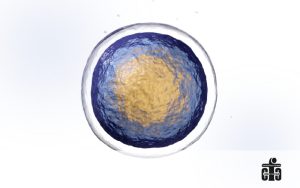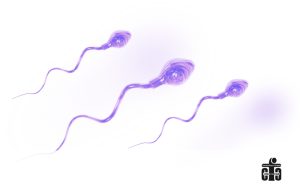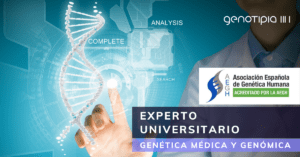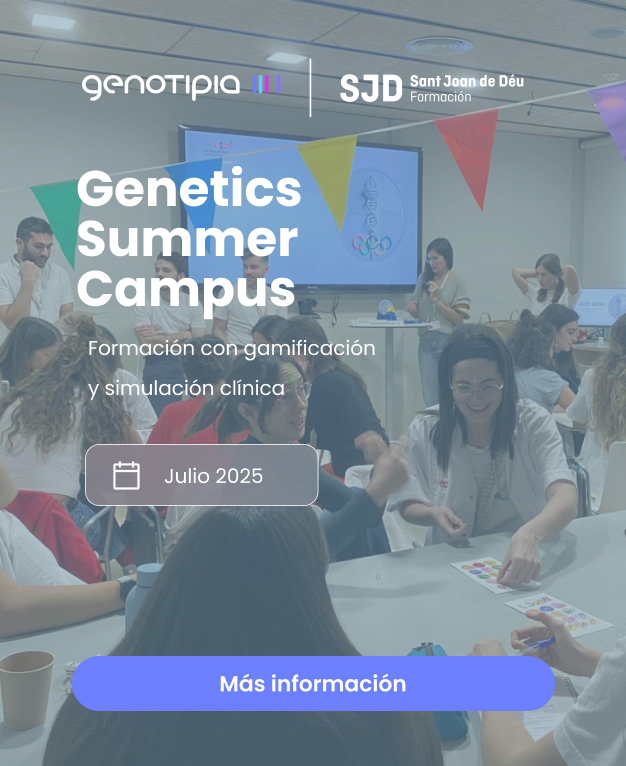Las técnicas de reproducción asistida humana (ART, por sus siglas en inglés) son herramientas biomédicas que imitan el proceso de fecundación in vivo en un entorno artificial in vitro y se utilizan para tratar la infertilidad tanto masculina como femenina que afecta alrededor del 15% de las parejas en edad reproductiva en todo el mundo, más de 50 millones de personas, según las últimas estadísticas de la Organización Mundial de la Salud (Babakhanzadeh et al., 2020). Esta condición médica impide concebir naturalmente por un conjunto de múltiples causas como la edad, los antecedentes médicos, los factores ambientales y el estilo de vida, que con frecuencia impactan en cierto grado a nivel molecular en el ADN de los gametos (Fainberg y Kashanian, 2019; Ahmed et al., 2020).
Específicamente, a diferencia de otras causas de infertilidad como las metabólicas, en aquellos casos donde la infertilidad tiene un factor genético no existen estrategias farmacológicas para remediarlo. Por lo tanto, la alternativa a ello es someterse a algún tratamiento de fertilidad asistida para aumentar las posibilidades de lograr el embarazo, y a su vez, evitar anomalías genéticas en la descendencia. Según el diagnóstico determinado por los distintos profesionales se recurre a la técnica de inseminación intrauterina (IIU), fertilización in vitro (FIV) o inyección intracitoplasmática de espermatozoides (ICSI). Esta última técnica fue desarrollada en la década de 1990, dando lugar al surgimiento de un tratamiento para la infertilidad masculina más específico, donde a partir de una muestra de calidad pobre se realiza la selección de unos pocos espermatozoides que serán introducidos mecánicamente dentro de los ovocitos (Rex et al., 2017). Con esta técnica, el profesional es quien selecciona el espermatozoide fecundante, que siempre debe presentar buena movilidad porque es indicador de vitalidad e integridad genética.
Ahora bien, independientemente de la técnica a utilizar, la integridad genómica del gameto femenino y masculino es de vital importancia dentro de este campo, principalmente porque el embrión hereda una carga genética 50% materna y 50% paterna, de modo que, cuanto mayor integridad presente el ADN de los progenitores menores son los riesgos que conllevan a un tratamiento fallido. En otras palabras, cuando el ADN presenta daños en su estructura su integridad es menor, y, por lo tanto, el potencial reproductivo del gameto disminuye y, en caso de generar un embrión, compromete el desarrollo normal. De modo contrario, una adecuada integridad genética es favorable para el gameto ya que generará un embrión viable con mayores oportunidades de éxito en el tratamiento, el cual será alcanzado acompañado de la técnica más adecuada a las circunstancias.
Al comparar ambos gametos el que sufre más lesiones en su material genético es el espermatozoide porque no cuenta con un sistema de reparación del ADN. Este motivo posiciona al espermatozoide como la célula sexual más comprometida en la fertilidad y por ello, en años recientes se denominó a la fragmentación del ADN espermático como principal causa molecular de infertilidad masculina que genera daños letales o subletales en los espermatozoides, alterando, en primer lugar, parámetros vinculados a su capacidad fecundante, y luego, comprometiendo a la descendencia (Agarwal et al., 2020; Esteves et al., 2021). Sosteniendo este nuevo paradigma en la infertilidad masculina, a la par de los avances sobre esta temática, se observó en múltiples casos clínicos una correlación entre dicho parámetro cuando supera el umbral de fragmentación (>20%) y los efectos negativos en los resultados reproductivos de las parejas, debido a la pobre calidad del embrión resultante en términos genéticos y morfológicos. Ante estos resultados, se concluyó que a mayor grado de fragmentación del ADN espermático aumentan los riesgos de producirse un fallo de implantación del embrión o abortos espontáneos recurrentes, disminuyendo la probabilidad de producir un embarazo a término (Agarwal et al., 2019).
No obstante, es importante mencionar que los resultados negativos vinculados a este parámetro seminal se reflejan tanto en la técnica de IIU como las de FIV e ICSI. En consecuencia, se intensificó la investigación en esta área, dando lugar al desarrollo de nuevas herramientas que procesen muestras seminales más eficientemente, incluyendo la integridad genética como parámetro central de selección (Rappa et al., 2016). A pesar de observarse resultados alentadores, especialmente con los dispositivos desarrollados a partir de microfluidos, muchas de las nuevas metodologías aún se encuentran bajo investigación para comprobar su eficacia y eficiencia en comparación con las técnicas convencionales originadas hace más de 30 años (Samuel et al., 2018).
La gran diferencia entre las técnicas rutinarias y las de vanguardia es que las últimas evitan pasos que dañan la integridad genética con la finalidad de recuperar los espermatozoides con poca o nula fragmentación de su material hereditario. Pero aún debe aumentar el volumen de estudios para garantizar su seguridad y ser avalados por la comunidad científica y clínica en la práctica. Sin duda alguna, el equipo de laboratorio coincide con otros especialistas en que el incremento de estudios sobre el impacto de herramientas innovadoras diseñadas principalmente desde el punto de vista genético aportará información relevante para aplicar en un futuro cercano herramientas terapéuticas más precisas, personalizadas e integrales acorde a las características de los pacientes afectados, logrando aumentar las tasas de embarazo.
Mientras tanto, en condiciones naturales, la reparación de daños en el ADN del espermatozoide depende del ovocito que sí cuenta con un sistema de reparación que actúa tras ser fecundado por éste, cuando se complementan ambos genomas para constituir un cigoto diploide (2n). A pesar de contar con esta estrategia natural, la capacidad de reparación que tiene el ovocito va a depender del tipo de lesión que presente el ADN espermático y su porcentaje afectado, y la calidad del ovocito, un factor generalmente ligado a la edad de la mujer (Colaco y Sakas, 2018). Pero en este punto existe una limitación, ya que es más difícil evaluar el ovocito por ser una célula sexual compleja. Más aún son escasos los estudios sobre la fragmentación del ADN de ovocitos ya que la disponibilidad es acotada debido a que, a diferencia de los espermatozoides que se encuentran en constante producción, el gameto femenino se produce durante la vida fetal de la mujer y esta nace con entre 1 y 2 millones de ovocitos los cuales irá perdiendo a lo largo de su vida sin reponerlos. Esto hace que la reserva de ovocitos sea limitada y que su disponibilidad decrezca con la edad. A partir de ello, solo se han realizado pocos estudios sobre ovocitos donados para investigación por pacientes que obtuvieron un excedente de estos en sus punciones foliculares para tratamientos de FIV o ICSI. De hecho, es habitual en los laboratorios de reproducción humana realizar solo una evaluación morfológica de los ovocitos, ya que el usar técnicas más invasivas podría destruir las células reproductivas femeninas sin posibilidad de usarlas en el tratamiento. Por esta razón muchos trabajos publicados en el tema se basaron en resultados retrospectivos.
Distintos expertos coinciden, a partir de trabajos científicos, del diagnóstico morfológico de gametos y de los resultados clínicos, en que la calidad ovocitaria normalmente disminuye con el envejecimiento de la mujer, incluyendo su integridad genética, como consecuencia de factores estresantes que afectan al ovario y, por ende, reducen el número de ovocitos disponibles y su calidad, siendo además un efecto acumulativo en el tiempo (Winship et al., 2018; Ahmed et al., 2019). A raíz de ello se ha desarrollado la hipótesis de que la pérdida de calidad genética del gameto femenino desgasta la maquinaria de reparación del ADN y eventualmente, la capacidad de reparar los daños de su propio ADN y del ADN espermático. Como evidencia parcial de ello, en varios análisis de casos se ha visto que, si la fragmentación del ADN espermático es muy extensa, el embrión puede no desarrollarse o no implantarse en el útero, o puede ser abortado naturalmente en un estadio posterior (González-Marín et al., 2012). Estos resultados suelen observarse con mayor frecuencia en ovocitos de mujeres con edad materna avanzada, es decir, mayor a 40 años (Setti et al., 2021).
Los resultados mencionados anteriormente, que son producto de factores masculinos y femeninos combinados, hacen nuevamente que la fragmentación del ADN espermático sea un parámetro relevante al momento de evaluar cómo mejorar el éxito reproductivo y, por tanto, se intensifiquen los esfuerzos para hallar nuevas herramientas que propicien un escenario alentador para todos los pacientes que acuden a la ayuda profesional.
Por último, como la edad es un componente relacionado al envejecimiento reproductivo, también existen técnicas para preservar la fertilidad. La herramienta más importante para ello es la criopreservación, mediante la cual se conservan los gametos viables y se recurre a ellos en el momento que se desee concebir. Las técnicas de criopreservación más desarrolladas son el congelamiento lento y la vitrificación.
Una dificultad que presentan las técnicas de criopreservación es que, durante el procedimiento los gametos sufren un estrés fisiológico pudiendo generar en aquellas que sobreviven daños subcelulares e inducir la fragmentación del ADN (Ezzati et al., 2020; Albertini y Olsen, 2013), y luego, repercutir en la tasa de supervivencia de los gametos como también en la tasa de embarazo. Ante esta cuestión, estudios comparativos demostraron que la técnica de vitrificación es el método más eficiente y apropiado de criopreservación, porque la supervivencia de los gametos descongelados es mayor y además genera menor daño en el material genético (Iaizzo et al., 2016). Es por ello que numerosos laboratorios de reproducción asistida en todo el mundo la utilizan regularmente.
En síntesis, aún queda camino por recorrer en el campo de la medicina reproductiva para garantizar un embarazo exitoso y una descendencia sana. Con este fin, actualmente está teniendo especial interés el abordaje del factor genético desde la preconcepción hasta el futuro desarrollo del embrión en las técnicas de reproducción asistida humana para evitar anomalías genéticas y reducir los riesgos durante el embarazo. Particularmente, analizando los casos clínicos se halló que la fragmentación del ADN espermático tiene un impacto relevante en la fertilidad, siendo un parámetro inverso a los resultados reproductivos. Además, si ambos gametos tienen alteraciones genéticas severas existe la posibilidad de que sean incompatibles con el desarrollo embrionario y fetal normal, o presentar efectos negativos en las próximas generaciones, como la transmisión de enfermedades hereditarias. A partir de los hechos observados y junto al estado actual de los avances en tecnología y biología molecular, se está profundizando en este tema aún en exploración con el fin de desarrollar técnicas mejoradas de diagnóstico y tratamiento que asistan y con mayor precisión a cada paciente en su aspiración a concretar el nacimiento de un niño.
Numerosos grupos de investigación de todo el mundo están abocados al estudio de la alta fragmentación del ADN de los gametos, ya que se presenta como denominador común de varios tipos de efectos negativos en la fertilidad. Ahondar en este aspecto puede llegar a ser una solución definitiva para una población considerable de pacientes afectados por ella.



